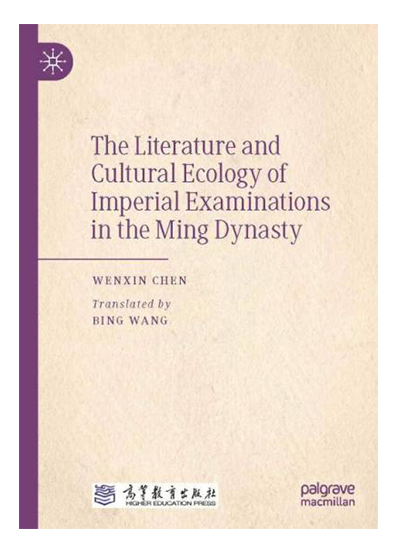Imperial Examination shaped Ming literary ecology

The Literature and Cultural Ecology of Imperial Examinations in the Ming Dynasty
Ming Dynasty (1368–1644) zhuangyuan [the top scorer in the Imperial Examination] tended to include celun [discourse on politics] written in the Palace Examination into their anthologies, deliberately placing them in prominent positions, while intentionally omitting baguwen [eight-legged essay]. Both are components of the Imperial Examination literary genres, so why were they treated so differently? Such phenomena are difficult to explain merely from literary or stylistic perspectives. They require a broader understanding situated within the vast and multi-dimensional historical background.
In July 2016, The Literature and Cultural Ecology of Imperial Examinations in the Ming Dynasty, by Wenxin Chen, a professor from the School of Chinese Language and Literature at Wuhan University (WHU), was published by Higher Education Press, with the aim of addressing certain difficulties in the field of Ming literature. Chen argues that Ming literature is not only influenced by internal literary factors but also interconnected with political, economic, and cultural contexts. He further emphasizes the significant role played by the ecological culture of the Imperial Examination in shaping the literary landscape of the Ming Dynasty.
At the end of 2023, the book was translated into English by Bing Wang, a professor from Fujian Normal University, and published by Palgrave Macmillan, a subsidiary of the internationally renowned publishing house Springer Nature, thus disseminating the voices of Chinese scholars to the English-speaking world.
By diving deep into the historical interaction between the Imperial Examination and literature, the author is thus able to abandon stereotypes and express “empathy.” For example, scholars of the Imperial Academy and their works are often criticized as “eulogizing the court and embellishing peace.” In fact, this dignified and ornate rhetoric is also indispensable under specific tempo-spatial circumstances. The style and function of such works are similar to the ya [court hymns] and song [sacrificial songs] of Shijing [The Book of Songs]. The “grand production of the court” and “the text of the historical times” composed by the literati of the Imperial Academy should be incorporated in the scope of literary history. Such interpretations adjust the research framework of Ming literature by restoring the historical context.
When considering the disparate treatment of celun and baguwen, it should be recognized that celun boasts a longer and more esteemed history, and is more economical in form. In contrast, baguwen is not only younger, but is also hindered by its restrictive form, making it challenging to express insightful opinions. As a result, baguwen naturally occupies a lower status than celun.
Lu Xiaojun is a professor from the School of Chinese Language and Literature at WHU.
Edited by YANG LANLAN
